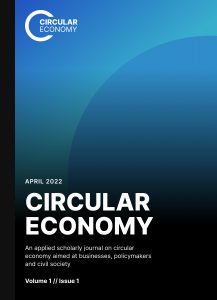Abstract
Keywords
References
Akbarieh, A., Jayasinghe, L. B., Waldmann, D., & Teferle, F. N. (2020). BIM-Based End-of-Lifecycle Decision Making and Digital Deconstruction: Literature Review. Sustainability, 12(7), 2670. https://doi.org/10.3390/su12072670
Amor, R., & Dimyadi, J. (2021). The promise of automated compliance checking. Developments in the Built Environment, 5, 100039. https://doi.org/10.1016/j.dibe.2020.100039
Bellini, A., & Bang, S. (2022). Barriers for data management as an enabler of circular economy: an exploratory study of the Norwegian AEC industry. IOP Conf. Ser.: Earth Environ. Sci, 1122(012047). https://doi.org/10.1088/1755-1315/1122/1/012047
Benghi, C. (2023). buildingSMART/IDS-Audit-tool: Tool to audit the validity of a .ids file (according to the IDSxml standard). buildingSMART International. https://github.com/buildingSMART/IDS-Audit-tool
Bocken, N. M. P., de Pauw, I., Bakker, C., & van der Grinten, B. (2016). Product design and business model strategies for a circular economy. Journal of Industrial and Production Engineering, 33(5), 308–320. https://doi.org/10.1080/21681015.2016.1172124
buildingSMART. (n.d.). IFC4.3.1.0 Documentation. Retrieved August 11, 2023, from https://ifc43-docs.standards.buildingsmart.org/
buildingSMART International. (2023a). IDS: Computer interpretable (XML) standard to define Information Delivery Specifications for BIM. https://github.com/buildingSMART/IDS
buildingSMART International. (2023b). buildingSMART Data Dictionary. https://www.buildingsmart.org/users/services/buildingsmart-data-dictionary/
Çetin, S., Raghu, D., Honic, M., Straub, A., & Gruis, V. (2023). Data requirements and availabilities for material passports: A digitally enabled framework for improving the circularity of existing buildings. Sustainable Production and Consumption 40 (2023), 422–437. https://doi.org/10.1016/j.spc.2023.07.011
Cottafava, D., & Ritzen, M. (2021). Circularity indicator for residential buildings: Addressing the gap between embodied impacts and design aspects. Resources, Conservation and Recycling, 164, 105120. https://doi.org/10.1016/J.RESCONREC.2020.105120
Durmisevic, E., Ciftcioglu, Ő., & Anumba, C. J. (2003). Knowledge model for assessing disassembly potential of structures. Deconstruction and Materials Reuse Proceedings of the 11th Rinker International Conference.
Eastman, C., Lee, J. min, Jeong, Y. suk, & Lee, J. kook. (2009). Automatic rule-based checking of building designs. Automation in Construction, 18(8), 1011–1033. https://doi.org/10.1016/J.AUTCON.2009.07.002
European Commission. (2020). EU Taxonomy – 2020/852 on the establishment of a framework to facilitate sustainable investment, and amending Regulation (EU) 2019/2088. European Parliament. http://data.europa.eu/eli/reg/2020/852/oj
Goddin, J., Marshall, K., Pereira, A., & Sven Herrmann, S. (2019). Circularity Indicators – An Approach to Measuring Circularity – Methodology. In Ellen MacArthur Foundation & ANSYS Granta. Ellen MacArthur Foundation. https://ellenmacarthurfoundation.org/material-circularity-indicator#:~:text=The%20Ellen%20MacArthur%20Foundation%20works,systems%20solutions%20at%20scale%2C%20globally.
GS1. (2023). GTIN Management Standard. GS1.
Hjelseth, E. (2012). Converting performance based regulations into computable rules in BIM based model checking software. EWork and EBusiness in Architecture, Engineering and Construction – Proceedings of the European Conference on Product and Process Modelling 2012, ECPPM 2012, 461–469. https://doi.org/10.1201/B12516-73
Huang, L., Krigsvoll, G., Johansen, F., Liu, Y., & Zhang, X. (2018). Carbon emission of global construction sector. Renewable and Sustainable Energy Reviews, 81, 1906–1916. https://doi.org/10.1016/J.RSER.2017.06.001
International Organization for Standardization. (2020). ISO 20887 Sustainability in buildings and civil engineering works — Design for disassembly and adaptability.
International Organization for Standardization. (2022). ISO 22057:2022 – Sustainability in buildings and civil engineering works — Data templates for the use of environmental product declarations (EPDs) for construction products in building information modelling (BIM). https://www.iso.org/standard/72463.html
Krijnen, T., Moult, D., & IfcOpenShell community. (2023). IfcOpenShell: Open source IFC library and geometry engine (0.7.0).
Lukka, K. (2003). The Constructive Research Approach. In L. Ojala & O.-P. Hilmola (Eds.), Case Study Research in Logistics (B, pp. 83–101).
Meex, E., Hollberg, A., Knapen, E., Hildebrand, L., & Verbeeck, G. (2018). Requirements for applying LCA-based environmental impact assessment tools in the early stages of building design. Building and Environment, 133, 228–236. https://doi.org/10.1016/j.buildenv.2018.02.016
Mestre, A., Fernandes, J., Ferreira, M. T., Gaspar, P., & Göswein, V. (2023). Circular EcoBIM Platform development – Final report. https://circularecobim.eu/library/
Nawrocka, N., Machova, M., Lund Jensen, R., Kanafani, K., Birgisdottir, H., & Hoxha, E. (2023). Influence of BIM’s level of detail on the environmental impact of buildings: Danish context Life cycle inventory (LCI) Global warming potential (GWP) Level of detail (LOD) Building information modelling (BIM). Building and Environment, 245. https://doi.org/10.1016/j.buildenv.2023.110875
Rasmussen, F. N., Malmqvist, T., Moncaster, A., Wiberg, A. H., & Birgisdóttir, H. (2018). Analysing methodological choices in calculations of embodied energy and GHG emissions from buildings. Energy and Buildings, 158, 1487–1498. https://doi.org/10.1016/j.enbuild.2017.11.013
Röck, M., Hollberg, A., Habert, G., & Passer, A. (2018). LCA and BIM: Visualization of environmental potentials in building construction at early design stages. https://doi.org/10.1016/j.buildenv.2018.05.006
Santos, R., Aguiar Costa, A., Silvestre, J. D., & Pyl, L. (2019). Integration of LCA and LCC analysis within a BIM-based environment. https://doi.org/10.1016/j.autcon.2019.02.011
Schartum, D. W. (2018). Digitalisering av offentlig forvaltning – fra lovtekst til programkode. Fagbokforlaget.
Shadram, F., Johansson, T. D., Lu, W., Schade, J., & Olofsson, T. (2016). An integrated BIM-based framework for minimizing embodied energy during building design. Energy and Buildings, 128, 592–604. https://doi.org/10.1016/j.enbuild.2016.07.007
Solihin, W., Dimyadi, J., Lee, Y.-C., Eastman, C., & Amor, R. (2017). The Critical Role of Accessible Data for BIM-Base’\d Automated Rule Checking Systems. Lean and Computing in Construction Congress – Volume 1: Proceedings of the Joint Conference on Computing in Construction, 53–60. https://doi.org/10.24928/JC3-2017/0161
Soust-Verdaguer, B., Llatas, C., & García-Martínez, A. (2017). Critical review of bim-based LCA method to buildings. Energy and Buildings, 136, 110–120. https://doi.org/10.1016/j.enbuild.2016.12.009
The Norwegian EPD Foundation. (2021). EPD-Norge.no. https://www.epd-norge.no/
Tomczak, A. (2023). Information Delivery Specification for circularity of buildings. https://doi.org/10.5281/zenodo.8393785
Tomczak, A., Berlo, L. v, Krijnen, T., Borrmann, A., & Bolpagni, M. (2022). A review of methods to specify information requirements in digital construction projects. IOP Conference Series: Earth and Environmental Science, 1101(9), 092024. https://doi.org/10.1088/1755-1315/1101/9/092024


